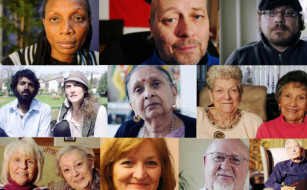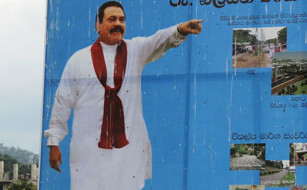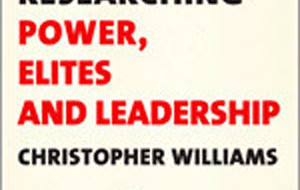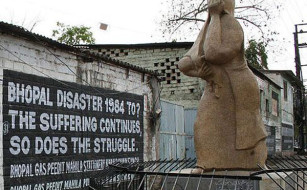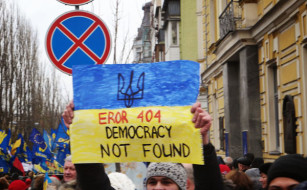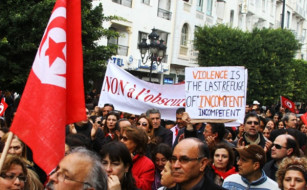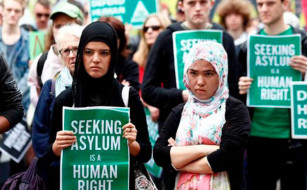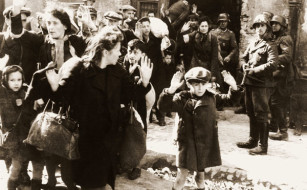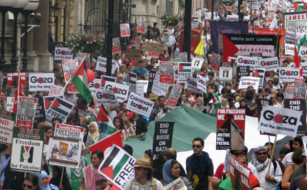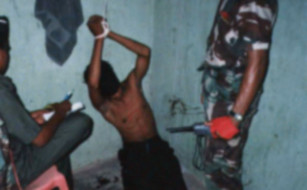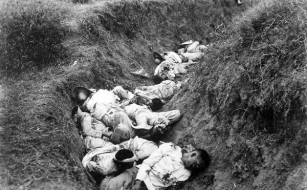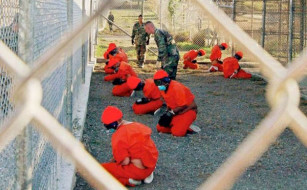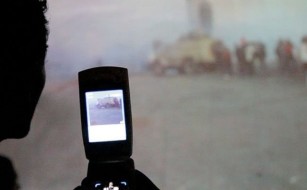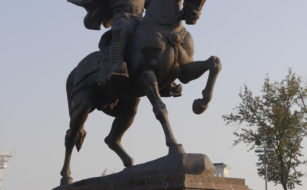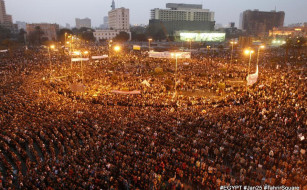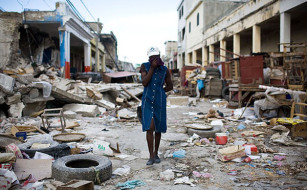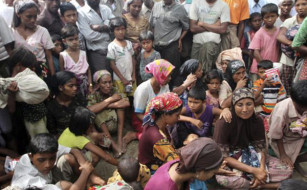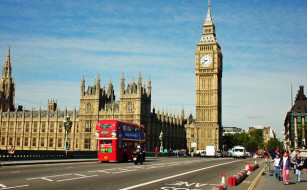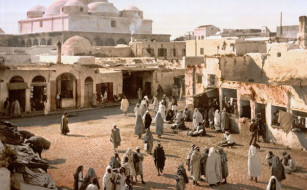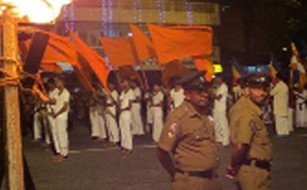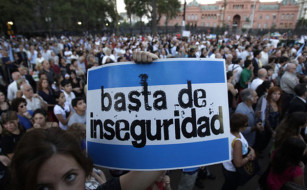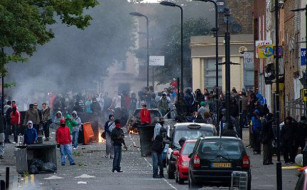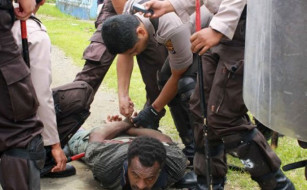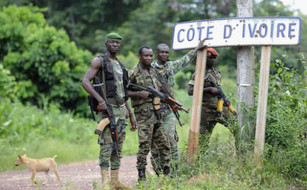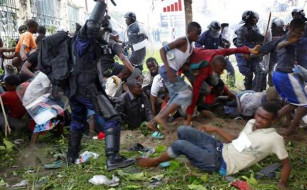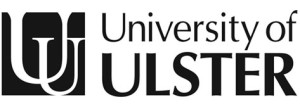The ‘Cop in your Head’ or the Clown in the Street: Antanas Mockus and the Theatre of Civic Culture
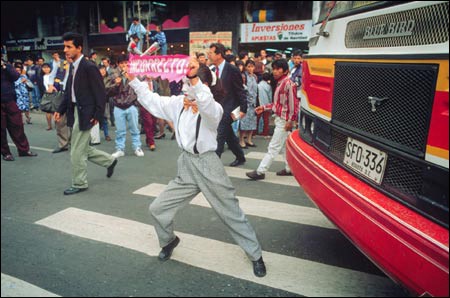
‘When there is nothing to be done… it’s time to bring out the clowns.’[1], Paul Bromberg, Director Institute of Culture, Bogota, in conversation with Antanas Mockus
When Antanas Mockus was elected Mayor of Bogotá in 1995, he inherited a city which was statistically the most dangerous in Latin America.[2] The UN Office of Drugs and Crime placed it among the top five most dangerous urban areas in the world, the U.S. State Department advised against any civilian travel and international airports singled out Bogotá (and Lagos) as the two highest risk no-go areas for tourists.[3] Upon assuming office Mockus initiated a city-wide research program (Civic Observatory) which identified the city’s rampant violence, delinquency and corruption as responsible for the perceived illegitimacy and weakening of its legal, judicial, and governmental institutions.[4] Building on the work he had conducted whilst Rector of the National University of Columbia (1990-1993) Mockus approached Bogotá as a ‘classroom of 6 million’ by establishing the Civic Culture Programme (Cultura Ciudadana) [1995-98] as an attempt to breach the ‘gap’ between law, morality and culture (social customs).[5] The activation of the citizen as legislator necessitated the reassessment of the relationship between the citizen as spectator and actor. Originally reconceptualised in Augusto Boal’s Theatre of the Oppressed (1979) as the ‘spect-actor’, the notion of activating the passive citizen, forms the fundamental modus operandi of Antanas Mockus’ attempt to create Civic Culture through citizen to citizen interaction.[6] Oppression, according to Boal, is when ‘one person is dominated by the monologue of another and has no chance to reply’.[7] Paulo Freire’s Pedagogy of the Oppressed (1970) favoured equal participation between teacher and student with the primary function of pedagogical practice being to ‘help people understand how power is used to block decision making by the oppressed’.[8] ‘Education is communication; it is dialogue, in as much as it is not the transference of knowledge but the meeting of interlocutor subjects who search for the meaning of significations.’[9]
Traffic mime, Bogota. c. 1996
Most famously, Mockus replaced 2000 of the city’s corrupt transit police with over twenty mime artists, each of whom went on to train an eventual group of over 400. Although ordinary citizens without any legal authority to detain or enforce the law, these ‘actors’ mocked jay-walkers and would routinely follow and mimic the actions of anyone they saw who performed an ‘immoral’ or socially unacceptable act. Similarly they would follow and applaud citizens who performed acts of social goodness or kindness and encourage passers-by and the general public to applaud and congratulate them as well. Shame is utilised as a pedagogical device to affect the behaviour of individuals who are judged to have broken socially constructed (informal) rules of the group (community). As one of the most visible and high-profile projects of Cultura Ciudadana, the mime artists received significant publicity from the media. Their actions were relayed and replayed on TV both nationally and abroad, starting a public debate on the wider issue of socially acceptable actions and the paradoxical ability of ‘silent’ communication to affect serious behavioural change. Mockus highlighted the media coverage of the Civic Culture programmes as both necessary and deliberate to produce a ‘multiplier effect’ to engage people who would not come into direct contact with the actions.[10]
‘The spectacle created a public from discreet and defensive residents who, during years of lawlessness, had been avoiding eye contact with one another. A public is formed in response to a spectacle, as performance theory makes clear; it is not a pre-constituted body with a general will to see a show. […] In Bogotá, the pantomime performances reconstituted a res-publica… where people came together in public to abide the law, with pleasure.’[11]
In her analysis of Bogotá’s Civic Culture, as a form of government sponsored creativity, Doris Sommer refers to Friedrich Schiller’s notion, ‘that [if] obedience to reason may become an object of inclination, it must represent for us the principle of pleasure’.[12]Mockus’ methods sought to reject traditional forms of institutional enforcement and present his attempts to create a civic society based on the harmonization of law, morality and culture as a deliberate form of ‘anti-politics’, or the politics of pleasure (play).
Mayor Antanas Mockus as his alter-ego’ SuperCitizen’
To this effect, in 1996, Mockus adopted the alter-ego of the SuperCitizen, a protagonist in the mould of the Joker in Boal’s Forum Theatre.[13] Appearing in a cape with a giant ‘C’ emblazoned on his chest he set about to vanquish injustice. To address the city’s lack of available clean water he appeared naked on TV in the guise of the SuperCitizen, having a shower to exercise water saving techniques. As a result between 1996 and 1998 the average water consumption per household fell from 27 to 20 m3/ per month. Mockus subverted the traditional role of Mayor; from legislator-in-chief to Chief Joker. It signified the possibility that those in power could be ‘clowns’ and therefore inversely, those on the street could legislate power. It upturned the social hierarchy of decision making. Mockus the anti-politician embodies a form of ‘anti-politics’ which attempts to foster civic interaction to produce an Active Citizenship in which each citizen becomes an agent in implementing the law. Most importantly this is independent from figures of authority or rigid institutional systems, structures or directives. ‘Citizen participation is a complement to decentralisation because it fosters an active citizenry… [and] thus in some instances makes possible the construction of norms ‘from below’.[14] Therefore, for civic culture to be effective it must be formed, or at least appear to be formed, within the community in which it operates and not imposed from above. ‘It is a mistake of neo-liberalism and socialist romanticism that one can be at the same time empowered to tell others what to do and disempowered to be one of them and part of the community on a self-help mission.’[15]
Mockus uses Boal’s techniques to create community-based consensus through equal participation to overcome what Friere describes as a rigid dichotomy of educator/educated, oppressor/oppressed. Bogota’s active citizens become spect-actors. ‘All must act… all must be simultaneously chorus and protagonist in the necessary transformation of society.’[16] The elimination of a demarcated spectator/actor/audience was not done ‘in the name of symbolically realising a community to come (the utopian mode invoked so often in European participatory art), but more forcefully as a practical training in social antagonism, or what Boal vividly describes as a ‘rehearsal for revolution’.[17]
Through a process of decentralisation and self-regulation, Mockus hi-jacks the techniques of the Theatre of the Oppressed to present Civic Culture as a ‘rehearsal for democracy’. It is, however, a democracy where freedom is equated with Order.[18] This process of ‘democratisation’ differs from ‘western’ models as Mockus rejects the notion that democratic order ‘always emerges as a result of violent revolution.’[19] Instead, Mockus draws directly from Boal’s Legislative Theatre practice, that ‘the best way to democratise a room [for Mockus the metaphorical classroom of the city] is by playing games’.[20] The imposition of democratic order need not necessitate the elimination of the government by force (violence) or by cumulative Cultural Revolution, but by reforming institutions through ‘the intrinsic dynamism of programmes that coordinate active citizens with creative and transparent leadership’.[21]
If violence is the consequence of exchanges between citizens who are operating within different regulatory codes, then communicative action, ‘through representation and conflicting positions, can play to construct universally acceptable principles’.[22] ‘The jay-walkers and the laughing crowd are all spect-actors in Boal’s deconstructed neologism that undoes the difference between the doers and the done to.’[23] The mime artists function in a ‘facilitator’ role similar to Boal’s Joker.[24] They gave the spectators the chance to identify and solve their own solutions to collective problems.[25]
Building on Jürgen Habermas’ theory of communication and how dialogue creates social capital, Mockus identified the communicative potential of violence.[26] He stated that there existed, ‘no public physical violence that was not accompanied by an attempt to communicate something’.[27] To this end it was essential to identify ways to utilise violence as a new means of communication. ‘A violent person is someone who chooses a certain language and it must be of interest to society to invite him to choose other means of communication.’[28]
Mockus approached the endemic culture of violence in Bogotá by treating it as a form of urban disease requiring a cure. ‘Vaccination against Violence’ operated as a form of mass ‘city-wide performance therapy’.[29] 45,000 citizens inflated balloons on which were painted the image of a person whom they felt had abused/persecuted them. They performed an act of ‘self-medication’, being their own therapists by bursting the balloons as an act of catharsis or as a sign of forgiveness. This attempted to replace physical violence between citizens with symbolic, non-violent action.[30] Along with the decommissioning of arms through the voluntary exchange of weapons for Christmas vouchers, Mockus also sought to prohibit the carrying of firearms in public by reclassifying ‘everything that happen[ed] in the streets, parks and public establishments [as] a public spectacle (‘Let Weapons Rest in Peace at Christmas’, Decree 757, 1996).[31]These co-ordinated initiatives saw the homicide rate fall from 82 to 35 per 100,000 inhabitants between 1993 and 2000; a decrease of over 50% in seven years.
Bogota homicide decrease per 100,000 inhabitants during the period of Cultura Ciudadana
The replacement of physical violence with a new symbolic language represents Mockus’ belief that social cohesion/harmony is achieved through co-existence. Mockus defines co-existence (not as in the French cohabitation or the Spanish convivencia) as a form unique to Latin America, developed and adopted ‘to synthesise the ideal shared by diverse groups’.[32] The connection between tolerance and non-violence rests on shared or autonomously adopted rules.[33] The motivations behind interactions in society are defined by Mockus as those governed by law, morality and culture and it is only through the harmonization of all these three distinct and unique elements that co-existence is possible, and with it the rejection of violence as the primary means of communication.
‘A legal penalty is not the same thing as feeling guilt and neither of these punishments is comparable to social repudiation.’[34] Similarly, ‘motivation for behaviour based on respect for the written law, for how it is drawn up and applied can be differentiated from motivation based on gratifying one’s own conscience and the latter from motivation based on social recognition’.[35]
It is the relationship between these three regulatory systems which Mockus identified as forming the codes by which citizens interact with the authorities and more importantly with each other. The law is a clearly defined set of codes and rules to regulate in the common interest of all, written and enforced by state institutions (police/judiciary/government). Morality (moral regulation) is established by personal autonomy and one’s own judgement. While the Columbian Constitution respected religious (and cultural) diversity the tradition of the church still dictated its own separate form of moral guidance in directing both spiritual and physical behaviour; as the metaphorical angel whispering in your ear or Pinocchio’s cricket.[36] Finally, Mockus delineates a ‘third’ regulatory system of Culture or Social judgement. These are behaviours dictated by social norms, how to be accepted by society, often reliant on and as an extension of the localised ‘customs’.
It is this ‘divorce’ between regulatory systems that causes problems of violence, corruption and social disjuncture. There are many behaviours which are illegal yet accepted and condoned by society as ‘normal’. There are contexts in which stealing is deemed socially and morally necessary (in the case of poverty) yet still deemed illegal by the state. An ‘ideal society’, as Mockus describes it, is achieved through the attempt to align these regulatory systems so, ‘they coincide in the prohibition or encouragement of the same behaviours’.[37] In the construction of an ‘ideal society’, each regulatory system should serve to enforce the other. To this end the law should be subservient to cultural interactions (customs) while culture should be subservient to morality. Therefore, one’s own self-regulation should be the dominant regulatory form which is enforced first by society then finally by the law. The Nobel Prize winning Economist Douglas North asserted that attempting to affect and alter formal structures (laws, regulations) without addressing the informal structures (customs, social conventions) would lead to unexpected, and potentially negative, social results.[38]
Mockus’ strategy to ‘harmonize’ these regulatory systems sought to address these issues by recognising and improving the cultural regulation of interactions between strangers (as the encounter between strangers establishes the fundamentals of citizenship) and officials (and the interaction towards officialdom). Whether it be on public transport, in public areas, public establishments or in communities and neighbourhoods, civic culture sought to foster interpersonal regulation as a means to combating corruption, violence, public disorder.
When Mockus took office, ‘[Bogotá] seemed hopelessly mired in a level of corruption that turn[ed] almost any investment against itself, because conventional cures of money or more armed enforcement would have aggravated, not mitigated, the greed and the violence.’[39] For Mockus pain and fear of punishment are, of course, strong incentives. However, they also ‘generate resentment and [an ultimately irreparable] destabilising resistance to law’.[40] David Bayley goes further. ‘Police do not and cannot prevent crime. This is one of the best kept secrets of modern life. It is a myth.’[41]
In response to this, in 2001, at the start of Mockus’ second term in office, city administrators piloted the notion of community policing and trialled the introduction of ‘civic cards’ (tarjetas ciudadana). Bearing a ‘thumbs up’ on one side and a ‘thumbs down’ on the other, the civic cards were initially distributed to be used for citizens to show their approval or disapproval of drivers.[42] The initiative soon became a means by which citizens would communicate, and voice their support for individuals, as a replacement for conflict or abusive language. Between 2001 and 2003 over 1.6 million cards were distributed (to 23% of the population). Over time the cards came to be used to solve disputes, for personal interactions, as decorations and in public rallies and debates. While showing someone a red card has a significant symbolic meaning within Columbian society as a means of expressing rejection, the ‘thumbs up’ bore the phrase ‘Bogotá Coqueta’.[43] Coqueta translates as ‘flirtatious’ or ‘beautiful’ so every time a thumbs up was shown to a citizen, the action both rewarded the individual and symbolised that the city itself approved (flirtatiously) of the behaviour.[44]
Implemented simultaneously, the Citizen Educator Training Programme (Formación de Formadores de Ciudadanos) proved to be far more successful. Taught directly by Mockus and his staff, the programme encouraged officers to correct citizen’s behaviour without having to resort solely to force. More important was the implementation of a new Police Code based on extensive consultations which resulted in a ‘collective construction of the law’.[45] ‘The new Police Code favour[ed] personal self-regulation (when each person follows the norm out of consistency with their principles) and promoted cultural mutual regulation (when citizens, through recognition or censorship, peacefully promote other people’s abidance by the norm).’[46] Examples such as the civic card offer the clearest example of mutual regulation and the legislative potential of communication. ‘The State cannot fully guarantee citizen’s rights without accompaniment and support from the citizenry.’[47]
If cooperation between citizens forms the basis of social stability, Mockus attempted to usurp the traditional methods of maintaining this stability by favouring incentives (the carrot) over institutional coercion (the stick). Studies by Bogotá’s Civic Observatory indicated admiration for the law, admiration by society and self-gratification (personal admiration) were stronger motivations for civil behaviour than fear of legal sanctions, fear of guilt and fear of social rejection. If resentment feeds authoritarianism then ‘admiration is the feeling that sustains democracy’.[48] ‘Stronger than tolerance, admiration is an aesthetic response of surprise and wonder that Boal consciously coached on stage and on the street.’[49] This is not to say that Mockus rejected totally the coercive use of force to implement the law, but rather chose to focus on pedagogy as the primary source of a community-driven coercive self-regulation.
The potential benefits generated by public admiration of the law were identified by Bogotá’s Civic Observatory specifically in relation to tax collection. It concluded that while people understood and accepted the need for taxation (which Mockus claimed as a form of community solidarity), the disassociation, as in voting, between an individual’s contribution and the city or state wide effect(expenditure) led many to avoid paying them. However, through pedagogy, Cultura Ciudadana educated citizens as to their contribution to, as Mockus stated, ‘[see] the weight of their grain of sand’.[50] Employing the tradition of ‘chiva’, the city established Chiva Tributaria (tax buses) which gave people the chance to directly witness how their money was being spent. This engendered a sense of civic pride and direct association both with funded institutions and a sense of collective possession and ownership.
In 2002, the City administration launched a campaign for voluntary taxes. ‘110% forBogota’ suggested a voluntary 10% addition to regular taxes. Although denounced by critics as an impossible fantasy, by the end of the year 63,000 citizens had made the additional payment resulting in COP$1.177 million extra in revenue – enough to educate one thousand children for a year. The coercive enforcement of tax collection was subverted by the citizens surprising ‘admiration for the law’ and their willingness to engage with and contribute to their community. (Figure 4)
Social admiration and recognition was similarly utilised to tackle Bogotá’s wide-spread issue of domestic abuse. Outside of the public domain, domestic abuse posed a problem for Civic Culture initiatives in that it took place at home, behind closed doors, in a space traditionally insulated from State intervention. The endemic nature of abuse was compounded by the unwillingness to discuss in public the truth behind domestic violence. The city, therefore, responded by attempting to address the dominant chauvinism of Columbian life. ‘Women’s Night Out’ (1996) was a night dedicated to the women of Bogotá, when traditional gender roles were reversed and men were forbidden from leaving the house, except if they were carrying a special pass which had been printed in the daily newspaper. Although not legally binding, most men complied with the request. 700,000 women took to the streets and the only police on duty were women. In a lower middle-class neighbourhood of San Cristobal women marched through the streets, stopping and applauding men they saw through windows who had stayed in to take care of their children.[51] Over the night there was only one recorded homicide in the city, down from the average seven. The night sought to redress the attitude towards domestic labour by forcing men to understand a woman’s role within the home and wider society. The exercise led to a significant decrease in the number of reported domestic abuse cases through an increased dialogue between men and women in the domestic context.
The need for dialogue within Latin American political action(s) is evidenced in practices of liberation theology, Freirean pedagogy and literacy campaigns as a means of co-alignment (rather than antagonism) between artistic and political endeavours (e.g. Sandinistas of FSLN).[52] ‘Cultura Ciudadana combines pedagogy and persuasion to ‘harmonize’ the competing norms of moral, legal and cultural practices, first by demonstrating the costs of ‘divorce’ among them, and then by cajoling citizens to reconcile formal with informal codes of behaviour.’[53] The communally constructed ‘harmonization’ of law, culture and morality legitimises an imposed form of order/control. It seeks to ‘naturalise’ the law through the legitimisation of community support. To this extent, Mockus’ notion of freedom and implementation of ‘democracy’ as order is paradoxically authoritarian.
For the Marquis de Sade, a truly free society is one that has ‘abolished all existing laws, installing only one: that everyone must do what he or she likes, including committing crimes of any kind’.[54] The role of the police is, paradoxically to prevent reactionary citizens from attempting to re-impose some form of the traditional moral code of the ‘old repressive state’.[55] Mockus, however, rejects this notion of freedom. Whilst a slight divergence between the three systems of regulation is ultimately necessary for a ‘pluralist’ society to function, a ‘moral and cultural pluralism should not mean a corrosive relativism’, an ‘anything-goes’ culture’.[56]
The attempt to align group customs and morality with the law seeks to isolate and alienate the individual. The actions of the mimes and the tactics used in creating Civic Culture force the citizens to perform surveillance, judgement, and denouncement, all of which are indicative of a repressive system. If Boal’s ‘third world’ aesthetic of resistance made people aware of the possibilities and consequences of their actions, then transposed to a ‘first-world’ aesthetic of self-help’ Civic Culture has made each citizen ultimately responsible.[57] Through mutual regulation the silencing effect of ‘cop-on-the-street’ has become the self-silencing ‘cop-in-the-head’.[58] Community censorship ‘from below’ has replaced institutional State censorship ‘from above’. The police have been replaced by mimes, or been marginalized by citizen self-regulation, yet the mimes and citizens as spect-actors are still inherently violent and repressive agents/constructs of the state’s desire to impose its will. Through playing Mockus’ games the citizens are simultaneously performing democracy and sustaining their own repression.[59]
Bibliography
Bayley, David, Police for the Future: Studies in Crime and Public Policy,Oxford,Oxford University Press, 2004
Berger, Peter L. Neuhaus, John, To Empower People: From State to Civil Society, WashingtonDC. American Enterprise institute, 1996
Bishop, Claire. Artificial Hells, Participatory Art and the Politics of Spectatorship, Verso,London, 2012
Boal, Augusto. Theatre of the Oppressed, 2000, Pluto Press,London
Boal, Augusto. Hamlet and the Baker’s Son: My Life in Theatre and Politics,London &New York: Routledge, 2001
Boal, Augusto. Games for Actors and Non-Actors,London 7 New Yor, Routledge, 1992
Boal, Augusto. Legislative Theatre: Using Performance to make Politics,London, Routledge, 1998
Body-Gendrot, Sophie. Globalization, Fear and Insecurity: The Challenges for Cities North and South,London, Palgrave Macmillan 2013
Body-Gendrot, Sophie. The Social Control of Cities: A Comparative Perspective,London, Wiley, 2000
Bourdieu, Pierre, Acts of Resistance.Cambridge: Polity, 1998.
Camnizer, Luis. Conceptualism in Latin America: Didactics of Liberation, University ofTexas Press, Austin, 2007
Cohen-Cruz, Jan (ed.) Radical Street Performance An International Anthology,London, Routledge, 1998
Freire, Paulo. Pedagogy of the Oppressed, Penguin,London, 1996
Milgram, Stanley, Obedience to Authority,YaleUniversity Press,CambridgeUSA, 1974
Scapp, Ron. Managing to be Different: Educational Leadership as Critical Practice,New York, Routledge, 2006
Schutzman, Mady & Cohen-Cruz, Jan, Playing Boal: Theatre, Therapy, Actvisim,London &New York, Routledge, 1994
Roberts, Adam, Garton-Ash, Timothy etd. Civil Resistance & Power Politics The Experience of Non-Violent Action from Ghandi to the Present,OxfordUniversity Press,Oxford, 2011
Chapters
Cohen-Cruz, Jan. Theatricalising Politics: Interview with Augusto Boal
Publication: Schutzman, Mady & Cohen-Cruz, Jan, Playing Boal: Theatre, Therapy, Actvisim,London &New York, Routledge, 1994 p.227
Richard, Nelly. From The Dimension of Social Exteriority in the Production of Art
Publication: Cohen- Cruz, Jan etd. Radical Street Performance An International Anthology,London, Routledge, 1998 p.143
Schutzman, Mady, Brechtian Shamanism: Political Therapy of Augusto Boal, Publication: Boal, Augusto. Games for Actors and Non-Actors, London 7 New York, Routledge, 1992 p.137
Scapp, Ron Power Games: Augusto Boal and the Positioning of Power
Publication: Scapp, Ron Managing to be Different: Educational Leadership as Critical Practice,New York, Routledge, 2006 p.63
Articles & Journals
Alexander, Harriet & Stibbs, Jon. Columbia’s Antanas Mockus hopes his SuperCitizen past will help make him President, May 2010
Caballero, Maria Cristina. Academic turns city into a social experiment: Mayor Mockus of Bogota and his spectacularly applied theory.HarvardUniversity Gazette, March 2004
Della Porta, Donatella, Can Democracy be Saved? Participation, Deliberation & Social Movements, Ralph Milliband Memorial Lecture, LSE, 05/02/13
Dunjerovic, Aleksander and Navarro Bateman, Ilva, Creating Civic Culture In Bogota, Columbia, Management School, University of Liverpool, Research Series No. 2006/28, http://www.liv.ac.uk/managementschool/research/wp200628.pdf (21/12/12)
Gerwertz, Ken, Augusto Boal’s ‘Theatre of the Oppressed’, Harvard University Gazette, December 2003
Groys, Boris, Politics of Installation, e-flux journal #2, January 2009
Mockus, Antanas, Co-Existence as Harmonization of Law, Morality and Culture, Prospects, vol. XXXII, No. 1, March 2002
Mockus, Antanas, Bogota Mayor’s report: Self-Transformation and Citizenship Building Publication: Journal of International affairs: March, 2012, Vol. 65, Issue 2, p.143
North, Douglas, Nobel Prize Memorial Lecture: Economic Performance through Time:,Stockholm, 1993, (18/01/13), http://www.nobelprize.org/nobel_prizes/economics/laureates/1993/north-lecture.html
Rey, Juan Pablo Bermundez. Cultural Norms & Active Citizenship, 2009, http://individual.utoronto.ca/juanpa/Site/research_files/bermudez-mockus.pdf (11/01/13)
Sommer, Doris, From the Top: Government Sponsored Creativity, Professor of Romance Languages,HarvardUniversity, November 16, 2009
Vens, Mathew. Theatre of the Oppressed: Hector Aristizabal Tells a Story of Torture and Transformation http://www.fas.harvard.edu/~cultagen/models/TO_Ontario.pdf (21/01/13
Zmijewski, Artur & Warsza, Joanna, Blood Ties by Antanas Mokus, Berlin Biennale



